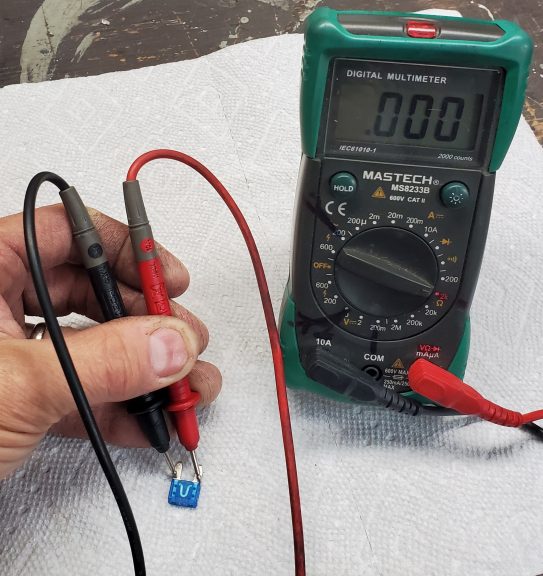Blown Fuse—Now What?
Continuously blowing a fuse on your Harley-Davidson can be extremely frustrating. Especially after you’ve already gone through half a dozen 15-amp fuses, or even took a shot in the dark with a 20-amp fuse (which also immediately blew). Electrical issues like this can be tricky, especially if the issue is intermittent. Before getting overwhelmed, it’s important to understand the purpose of a fuse in an electrical system and how it works.
The main job of a fuse is to protect the wiring.
Inside the body of a fuse is a metal conductor. The conductor is made with a metal that is similar to solder. It has a lower melting point than it’s corresponding wires. The size of the conductor is calibrated very carefully so that when the rated current is reached, enough heat is generated to melt the conductor and break the circuit. A fuse will blow when the current draw on a circuit exceeds the amperage rating of the fuse. If a light, a module, a starter, or another electrical component experiences a short circuit or a dead short, there will be an immediate rush of excessive current down that particular wire (or wires). If there were no fuse on this circuit, the excessive current would make the wires become extremely hot and possibly cause major damage. Wiring can melt, damage other components, or even start a fire. The fuses act as a built-in fail-safe.
Often, a visual inspection can verify if a fuse is blown. Sometimes, however, a fuse may look good and actually be blown.
The best way to test a fuse is by using a multi-meter or a continuity tester. Always remove the fuse from its receptacle before testing. Then, hook up a continuity tester to each blade of the fuse for your test result.
In the shop, we find that electrical issues are most common when customers replace handlebars, handlebar controls, or when a new electrical component has been added (or attempted to be added) to the motorcycle. If you are blowing fuses after replacing handlebars or handlebar controls, it should be obvious where to begin looking for damaged wiring. Even if you felt confident with your work or it will take hours of disassembly to diagnose. Another common reason for electrical issues is from laying the motorcycle down or from an accident.
Most fuses power more than one component. It is important to have access to a wiring diagram when having trouble pinpointing a short. The best diagrams for Harley Davidsons can be found in a factory electrical manual or Clymer online manuals. Clymer has full color manuals that can be easily magnified. They are often a cheaper alternative to a factory service manual.
If you have a fuse that is repeatedly blowing, remember to start by retracing your recent work or reviewing the motorcycle’s history.
PHOTOS:
– Example of Clymer, online, color diagram

– Example of a good 15 amp fuse. Meter display is 000

– Example of blown fuse. Meter display is l

Related Videos:
ElectricalFuse Box
Checking the Air Suspension on Harley-Davidson Shocks
Alarm won't go off
The videos access is awful. I've searched for starter on a softail got nothing to help me. Now I'm looking for main fuse I'm getting nothing.
Connecting a heated/cooling seat to a 2016 CVO Road Glide Ultra. The seat has a 4 prong connection and the bike connector only has two prongs. How can I change the 2 prong connector on the bike
You have no idea how many times I've been asked to find a problem within a circuit because of no power only to find out that the DVM they were using was at fault. Always test for continuity before testing fuse or circuit.